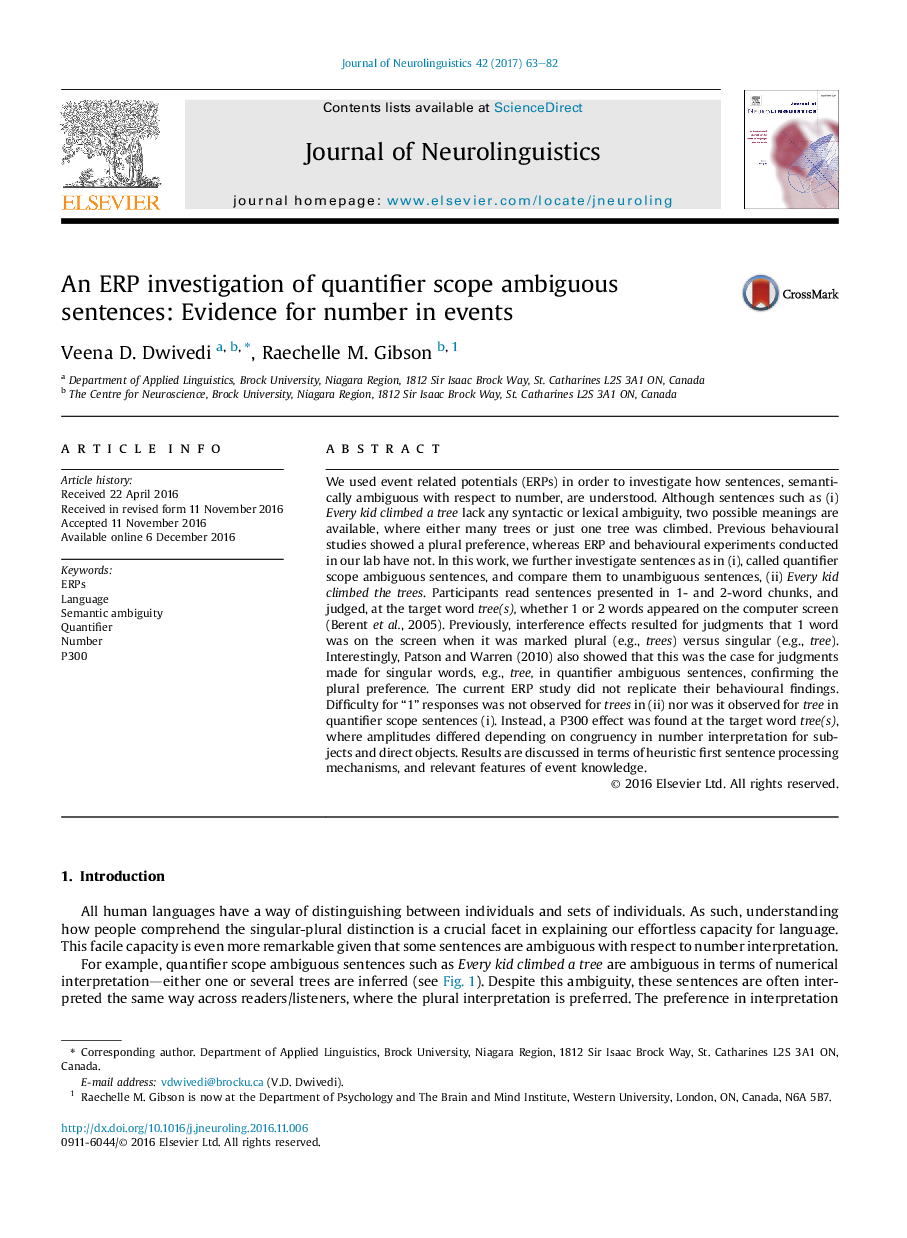| Article ID | Journal | Published Year | Pages | File Type |
|---|---|---|---|---|
| 5039223 | Journal of Neurolinguistics | 2017 | 20 Pages |
â¢Quantifier scope ambiguous sentences are processed via heuristic strategies.â¢Ease of sentence processing is determined by number congruency between subject and direct object.â¢Ease of sentence processing yields extra cognitive resources for secondary task.â¢P300 amplitude differences revealed for sentences with congruent number vs incongruent number.â¢Semantic representation of events must indicate number of entities in event.
We used event related potentials (ERPs) in order to investigate how sentences, semantically ambiguous with respect to number, are understood. Although sentences such as (i) Every kid climbed a tree lack any syntactic or lexical ambiguity, two possible meanings are available, where either many trees or just one tree was climbed. Previous behavioural studies showed a plural preference, whereas ERP and behavioural experiments conducted in our lab have not. In this work, we further investigate sentences as in (i), called quantifier scope ambiguous sentences, and compare them to unambiguous sentences, (ii) Every kid climbed the trees. Participants read sentences presented in 1- and 2-word chunks, and judged, at the target word tree(s), whether 1 or 2 words appeared on the computer screen (Berent et al., 2005). Previously, interference effects resulted for judgments that 1 word was on the screen when it was marked plural (e.g., trees) versus singular (e.g., tree). Interestingly, Patson and Warren (2010) also showed that this was the case for judgments made for singular words, e.g., tree, in quantifier ambiguous sentences, confirming the plural preference. The current ERP study did not replicate their behavioural findings. Difficulty for “1” responses was not observed for trees in (ii) nor was it observed for tree in quantifier scope sentences (i). Instead, a P300 effect was found at the target word tree(s), where amplitudes differed depending on congruency in number interpretation for subjects and direct objects. Results are discussed in terms of heuristic first sentence processing mechanisms, and relevant features of event knowledge.
